
Religion represents a belief or a system of faith in the existence of Gods or Goddesses or a superhuman controlling power. It finds expression in the innumerable ways and types of worship patterns, human beings take recourse to in various social systems. It assists an individual in identifying himself with his group or association. It supports him in the phase of uncertainty, disappointment and distress. In the ultimate analysis, it acts to reinforce the unity and stability of the society.
Religion, as practiced in the present era, had its genesis in the beliefs in soul, natural phenomena such as sun, moon, wind, floods, thunder, earthquakes etc. as also the beliefs in totems. The belief in soul takes the form of spirit after death. The soul spirit, it is believed, can be present in plants and animals as well. The animism as a theory of religion, originated to satisfy man’s intellectual curiosity about death, dreams, illusions, hallucinations and visions. On the other hand, as per naturism, man could not explain or control the super natural powers. Therefore, he not only submitted and surrendered himself to those forces but also began worshiping them. Such an exercise gradually ensured a kind of emotional satisfaction and stability to the mankind.
According to another view point, religion in its elementary forms was concerned with beliefs and rituals of the sacred objects and events of the society. In the primitive societies, based on clans, a totem such as tree, animal or rock began to be worshiped. In due course of time, religion could take proper form and became instrumental in reinforcing and promoting social solidarity. According to still another school of thought, religion evolved due to anxiety and stress situations such as birth, marriage and death faced and experienced by the human beings from time to time.
India, right from the beginning has been a land of multiple faiths, persuasions, and sects. At present, there are six major religious categories : Hindus forming 82.64 percent of population, followed by Muslims (11.35%), Christians (2.43%), Sikhs (1.96%), Buddhists (0.71%) and Jains (0.48%). Apart from these, a small percentage still practice animism and naturism along with their new religions. Also there are some groups, such as, the Jews, Zoroastrians and Bahais who follow religions brought in by the migrant communities.
Hinduism is a pantheistic religion comprising of many sects, scriptures, worship patterns and deities. An average follower’s life is based on the idea of purity and pollution. It is governed by such notions as samsara (world), karma (deed), punya (right deed), papa (evil deed), dharma (prescribed course of conduct) and moksha (liberation of soul). Besides these thelogical notions, influence of Varna and Ashrama on the life of an individual Hindu cannot possibly be undermined.
The Varna hierarchy : Brahmins, Kshatriyas, Vaishyas and Shudras is explained in terms of the alleged deeds of a person in his previous life. A Hindu can hope for an upward mobility in the next birth provided he has performed with care, the duties attached to his Varna and observed a disciplined and austere life. The element of rigidity concerning Varna and Jatis resulting into social inequalities has been adequately highlighted in all great Hindu scriptures – the Vedas, the Upanishads and the Gita.
Over the years, nonetheless, several protest movements have taken place against Hinduism. The rise of Jainism and Buddhism in the sixth century B.C. as a reaction against the orthodox Brahamanism can be considered as the first major religious protest movement. The Jainism questioned and denied the authority of the Vedas and generated a certain revolt against the Vedic sacrifices. The Buddhism, while accepting the essential teachings of the Upanishads, supported Jainism in denouncing Vedic sacrifices and the Brahamanic supremacy. Both the religions, however, stood for the cause of common man, by asserting the common spiritual right of all men, acknowledging compassion and love for all living beings, preaching in the language of common people and above all, rejecting the authority of the arrogant and all pervading Brahmins.
The third religious group to emerge as a protest against the established religions is Sikhism. Unlike Jainism and Buddhism, it is a relatively young religion. Guru Nanak, their founder too reacted against the dominance of the Brahmin priests, their legalistic controls as also the Islamic orthodoxy. The notable Sikh sects to emerge over the years are: Udasis, Sahajdharis, Keshdharis, Nirankaris and Namdharis. The Udasis sect founded by Baba Sri Chand, elder son of Guru Nanak in the15 century, comprises of a group of asetic men who either do not wear clothes or wear yellow robes. The Sahajdharis or the slow adopters are shaven like Hindus. They do not subscribe to the militant teachings promoted by Guru Govind Singh. The Keshdharis (hair-wearers), the most popular face of Sikhism today include sub-sects, such as, the Amritdharis or Khalsas, the Nihangs, and the Nirmals.
The Nirankaris, founded by Baba Dayal Das in the middle of 19th century, follow an Upanishadic vision of the formless, eternal nature of God, popularized by Guru Nanak. But they accept an on going line of living Gurus. The Namdharis or the Kukas too evolved as a reform group in the 19th century. By following vegetarianism and sporting straight white turbans, they stand apart vis-à-vis other sects. They too have a living Guru, who is reported to have descended from the original Gurus. They espouse that Guru Govind Singh, the tenth and the last Guru of Sikhs did not die at Nanded. Rather, according to them, he went incognito to Amritsar and bestowed the Gurgaddi (leadership) on Guru Balak Singh.
Christianity and Islam in India are generally perceived to be products of conquest and colonization. However, it is fact that Christianity was preached in our liberal and tolerant country in the first century A D. In the same way, Islam was propagated by the Arab migrants in the Malabar region of South India from the 7th century onwards. The three southern states, Andhra Pradesh, Tamil Nadu and Kerala together account for more than 60 percent of the Christians in India. Nagaland, Meghalaya, Mizoram, Jharkhand, Goa and Daman & Diu too have a sizeable percentage of Christians. Thus Christians are dispersed in different regions and are ethnically divided. There are denominations such as Catholics, Protestants, Anglo-Indians, Tribal Christians, Neo-Christians, Syrian Christians etc., all speaking different languages and pursuing myriad styles of life.
Muslims are the largest minority community in India. Like Christians, they are both concentrated and dispersed. Islam as a faith too is sharply divided, both denominationally and ethnically. The division into Shias and Sunnis is universal. It, unfortunately, results into frequent clashes between the two not only in India but elsewhere too. It can be said that past political glory, substantial size, ability to adapt local mores, folkways and cultures and a commitment to propagate their religion, makes Indian Muslims a collectivity distinct vis- a- vis other religions.
The above attempted analysis goes on to prove that India has a positive Kaleidoscope of religions. There is more diversity of religions, sects and denominations in India than anywhere else in the world. Apart from having nearly all the world’s great religious collectivities represented here, India has been also the birthplace of three of the world’s greatest religions. The country, in addition, has the proud privilege to commemorate a few of the religion founder’s birthdays as the Gazetted Holidays,
Over the years it has been observed that various religions could exist and prosper in our multi-ethnic society in an atmosphere of tolerance, peace and harmony. The phenomenon of communalism involving Hindus and Muslims took birth only in the beginning of the 20th century. Same can be also considered a colonial legacy. The dedicated and devoted architects of the Indian Constitution, after having been convinced that communalism was in no way conducive to national integration provided the country a secular character. It has ensured a peaceful co-existence of all the religions without any State patronage. However, it is a matter of concern that some political configurations still voice their opinion in favour of a particular religion or faith, by duly taking adequate precaution to survive and sustain under the ambit of a secular setting.
It will be worthwhile to flag that the occasional communal tensions should not be taken as a threat to the process of secularization. Many studies have shown that the material interests rather than the religious considerations, on the one hand and personal interests and enmity rather than the group interests on the other, have been instrumental in sowing the seeds of hatred against each other. They also instigate and perpetuate the communal tensions. The firm faith in the dictum ‘Unity in Diversity’, prevalent in the mind of an average Indian has been always successful in crushing the evil designs of certain self proclaimed warriors of God, who, time and again, try to make a futile effort to prove that India’s Secular Democracy has a fragile face. Needless to say, such a faith has sustained us. It will continue to do so.
Religion, as practiced in the present era, had its genesis in the beliefs in soul, natural phenomena such as sun, moon, wind, floods, thunder, earthquakes etc. as also the beliefs in totems. The belief in soul takes the form of spirit after death. The soul spirit, it is believed, can be present in plants and animals as well. The animism as a theory of religion, originated to satisfy man’s intellectual curiosity about death, dreams, illusions, hallucinations and visions. On the other hand, as per naturism, man could not explain or control the super natural powers. Therefore, he not only submitted and surrendered himself to those forces but also began worshiping them. Such an exercise gradually ensured a kind of emotional satisfaction and stability to the mankind.
According to another view point, religion in its elementary forms was concerned with beliefs and rituals of the sacred objects and events of the society. In the primitive societies, based on clans, a totem such as tree, animal or rock began to be worshiped. In due course of time, religion could take proper form and became instrumental in reinforcing and promoting social solidarity. According to still another school of thought, religion evolved due to anxiety and stress situations such as birth, marriage and death faced and experienced by the human beings from time to time.
India, right from the beginning has been a land of multiple faiths, persuasions, and sects. At present, there are six major religious categories : Hindus forming 82.64 percent of population, followed by Muslims (11.35%), Christians (2.43%), Sikhs (1.96%), Buddhists (0.71%) and Jains (0.48%). Apart from these, a small percentage still practice animism and naturism along with their new religions. Also there are some groups, such as, the Jews, Zoroastrians and Bahais who follow religions brought in by the migrant communities.
Hinduism is a pantheistic religion comprising of many sects, scriptures, worship patterns and deities. An average follower’s life is based on the idea of purity and pollution. It is governed by such notions as samsara (world), karma (deed), punya (right deed), papa (evil deed), dharma (prescribed course of conduct) and moksha (liberation of soul). Besides these thelogical notions, influence of Varna and Ashrama on the life of an individual Hindu cannot possibly be undermined.
The Varna hierarchy : Brahmins, Kshatriyas, Vaishyas and Shudras is explained in terms of the alleged deeds of a person in his previous life. A Hindu can hope for an upward mobility in the next birth provided he has performed with care, the duties attached to his Varna and observed a disciplined and austere life. The element of rigidity concerning Varna and Jatis resulting into social inequalities has been adequately highlighted in all great Hindu scriptures – the Vedas, the Upanishads and the Gita.
Over the years, nonetheless, several protest movements have taken place against Hinduism. The rise of Jainism and Buddhism in the sixth century B.C. as a reaction against the orthodox Brahamanism can be considered as the first major religious protest movement. The Jainism questioned and denied the authority of the Vedas and generated a certain revolt against the Vedic sacrifices. The Buddhism, while accepting the essential teachings of the Upanishads, supported Jainism in denouncing Vedic sacrifices and the Brahamanic supremacy. Both the religions, however, stood for the cause of common man, by asserting the common spiritual right of all men, acknowledging compassion and love for all living beings, preaching in the language of common people and above all, rejecting the authority of the arrogant and all pervading Brahmins.
The third religious group to emerge as a protest against the established religions is Sikhism. Unlike Jainism and Buddhism, it is a relatively young religion. Guru Nanak, their founder too reacted against the dominance of the Brahmin priests, their legalistic controls as also the Islamic orthodoxy. The notable Sikh sects to emerge over the years are: Udasis, Sahajdharis, Keshdharis, Nirankaris and Namdharis. The Udasis sect founded by Baba Sri Chand, elder son of Guru Nanak in the15 century, comprises of a group of asetic men who either do not wear clothes or wear yellow robes. The Sahajdharis or the slow adopters are shaven like Hindus. They do not subscribe to the militant teachings promoted by Guru Govind Singh. The Keshdharis (hair-wearers), the most popular face of Sikhism today include sub-sects, such as, the Amritdharis or Khalsas, the Nihangs, and the Nirmals.
The Nirankaris, founded by Baba Dayal Das in the middle of 19th century, follow an Upanishadic vision of the formless, eternal nature of God, popularized by Guru Nanak. But they accept an on going line of living Gurus. The Namdharis or the Kukas too evolved as a reform group in the 19th century. By following vegetarianism and sporting straight white turbans, they stand apart vis-à-vis other sects. They too have a living Guru, who is reported to have descended from the original Gurus. They espouse that Guru Govind Singh, the tenth and the last Guru of Sikhs did not die at Nanded. Rather, according to them, he went incognito to Amritsar and bestowed the Gurgaddi (leadership) on Guru Balak Singh.
Christianity and Islam in India are generally perceived to be products of conquest and colonization. However, it is fact that Christianity was preached in our liberal and tolerant country in the first century A D. In the same way, Islam was propagated by the Arab migrants in the Malabar region of South India from the 7th century onwards. The three southern states, Andhra Pradesh, Tamil Nadu and Kerala together account for more than 60 percent of the Christians in India. Nagaland, Meghalaya, Mizoram, Jharkhand, Goa and Daman & Diu too have a sizeable percentage of Christians. Thus Christians are dispersed in different regions and are ethnically divided. There are denominations such as Catholics, Protestants, Anglo-Indians, Tribal Christians, Neo-Christians, Syrian Christians etc., all speaking different languages and pursuing myriad styles of life.
Muslims are the largest minority community in India. Like Christians, they are both concentrated and dispersed. Islam as a faith too is sharply divided, both denominationally and ethnically. The division into Shias and Sunnis is universal. It, unfortunately, results into frequent clashes between the two not only in India but elsewhere too. It can be said that past political glory, substantial size, ability to adapt local mores, folkways and cultures and a commitment to propagate their religion, makes Indian Muslims a collectivity distinct vis- a- vis other religions.
The above attempted analysis goes on to prove that India has a positive Kaleidoscope of religions. There is more diversity of religions, sects and denominations in India than anywhere else in the world. Apart from having nearly all the world’s great religious collectivities represented here, India has been also the birthplace of three of the world’s greatest religions. The country, in addition, has the proud privilege to commemorate a few of the religion founder’s birthdays as the Gazetted Holidays,
Over the years it has been observed that various religions could exist and prosper in our multi-ethnic society in an atmosphere of tolerance, peace and harmony. The phenomenon of communalism involving Hindus and Muslims took birth only in the beginning of the 20th century. Same can be also considered a colonial legacy. The dedicated and devoted architects of the Indian Constitution, after having been convinced that communalism was in no way conducive to national integration provided the country a secular character. It has ensured a peaceful co-existence of all the religions without any State patronage. However, it is a matter of concern that some political configurations still voice their opinion in favour of a particular religion or faith, by duly taking adequate precaution to survive and sustain under the ambit of a secular setting.
It will be worthwhile to flag that the occasional communal tensions should not be taken as a threat to the process of secularization. Many studies have shown that the material interests rather than the religious considerations, on the one hand and personal interests and enmity rather than the group interests on the other, have been instrumental in sowing the seeds of hatred against each other. They also instigate and perpetuate the communal tensions. The firm faith in the dictum ‘Unity in Diversity’, prevalent in the mind of an average Indian has been always successful in crushing the evil designs of certain self proclaimed warriors of God, who, time and again, try to make a futile effort to prove that India’s Secular Democracy has a fragile face. Needless to say, such a faith has sustained us. It will continue to do so.



























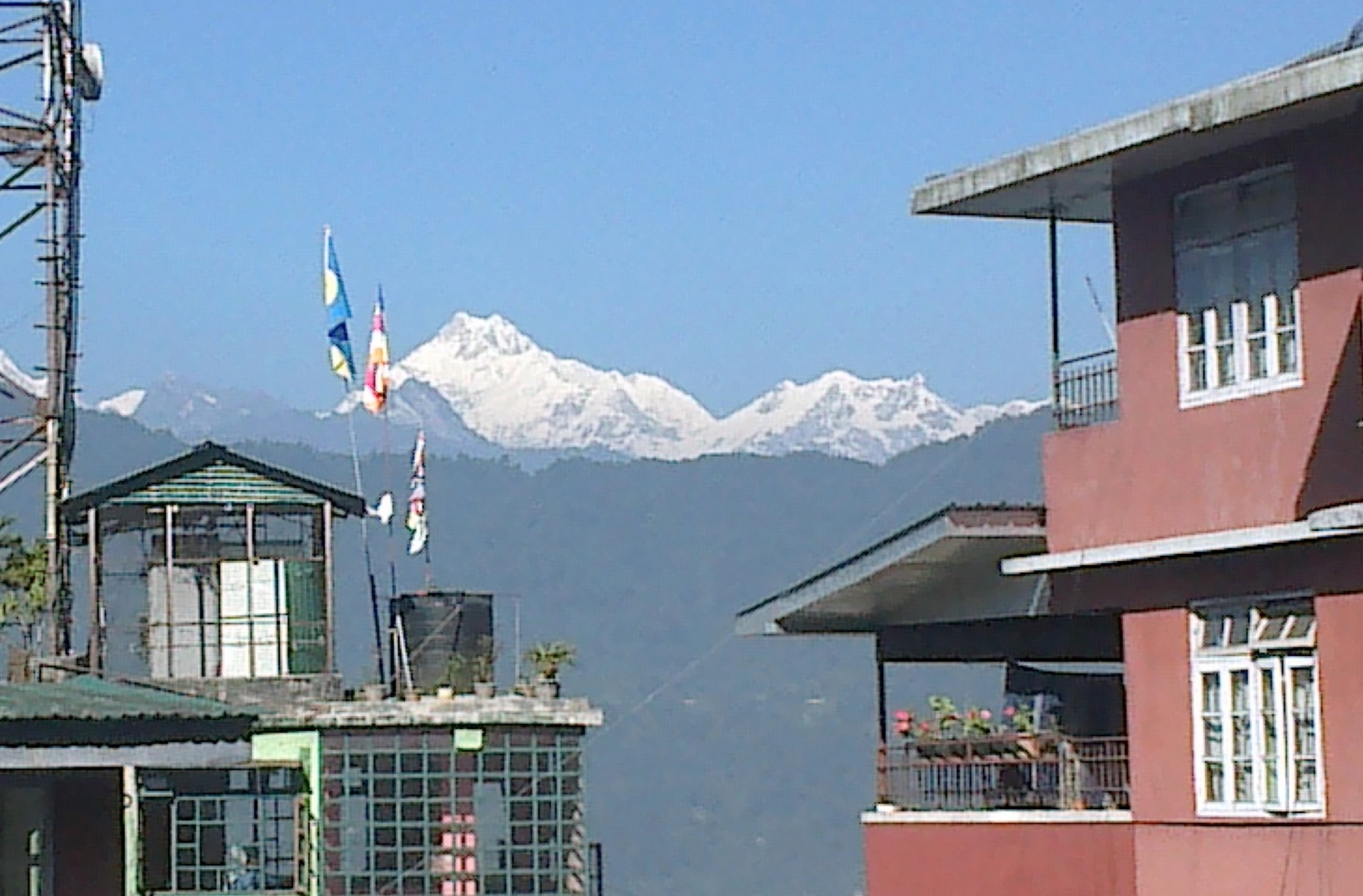




















































































































































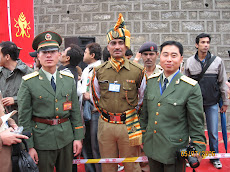



























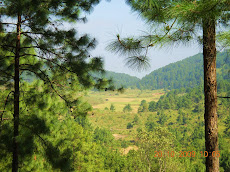








.jpg)



























































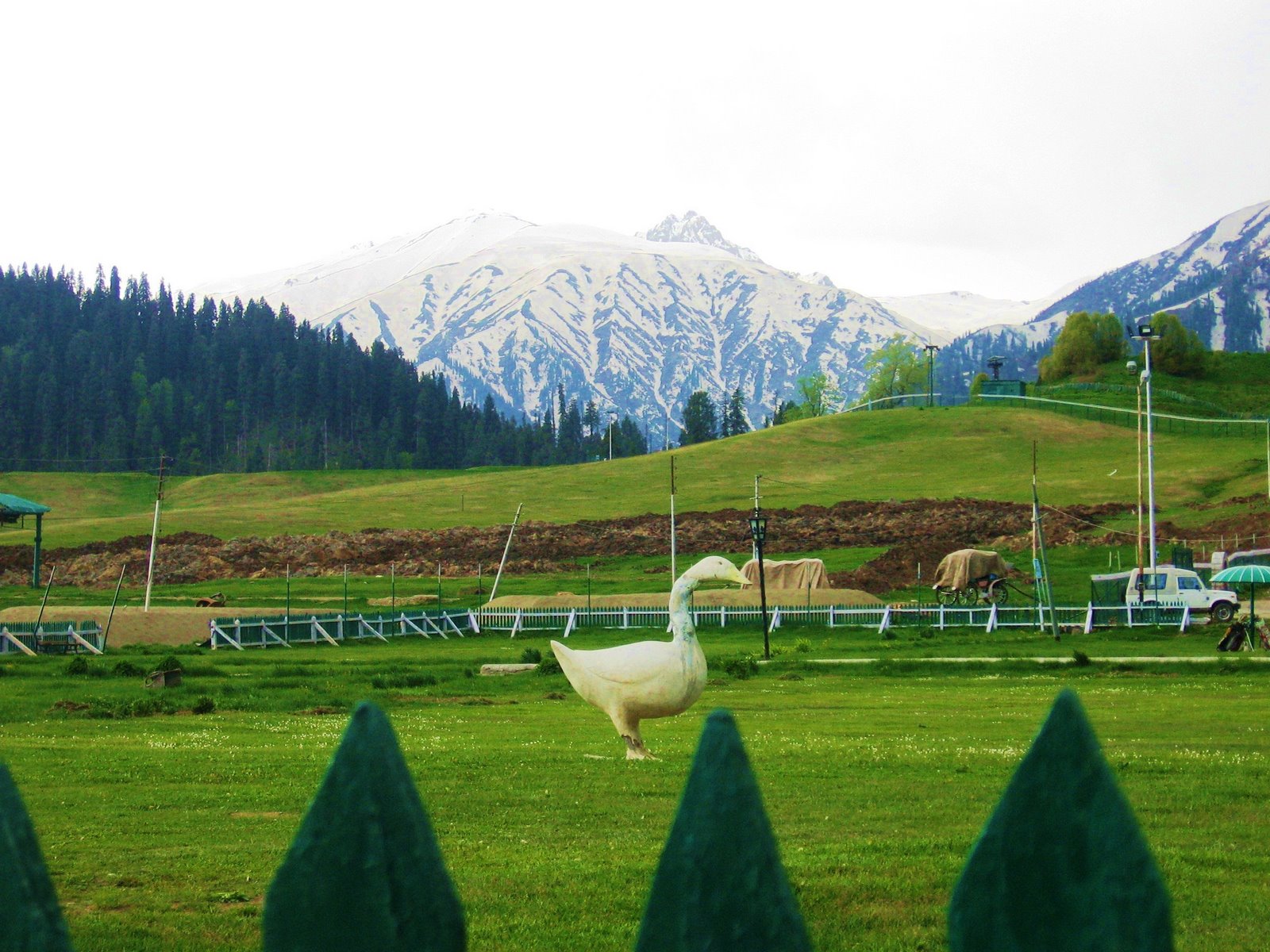
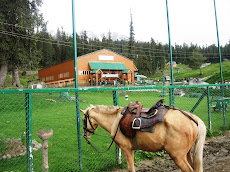
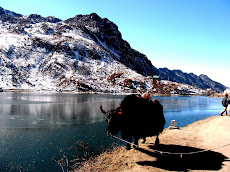












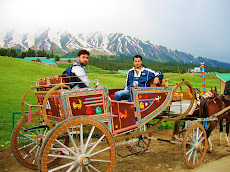













1 comment:
Glad to see the article and will read
in detail and let you know.
Post a Comment